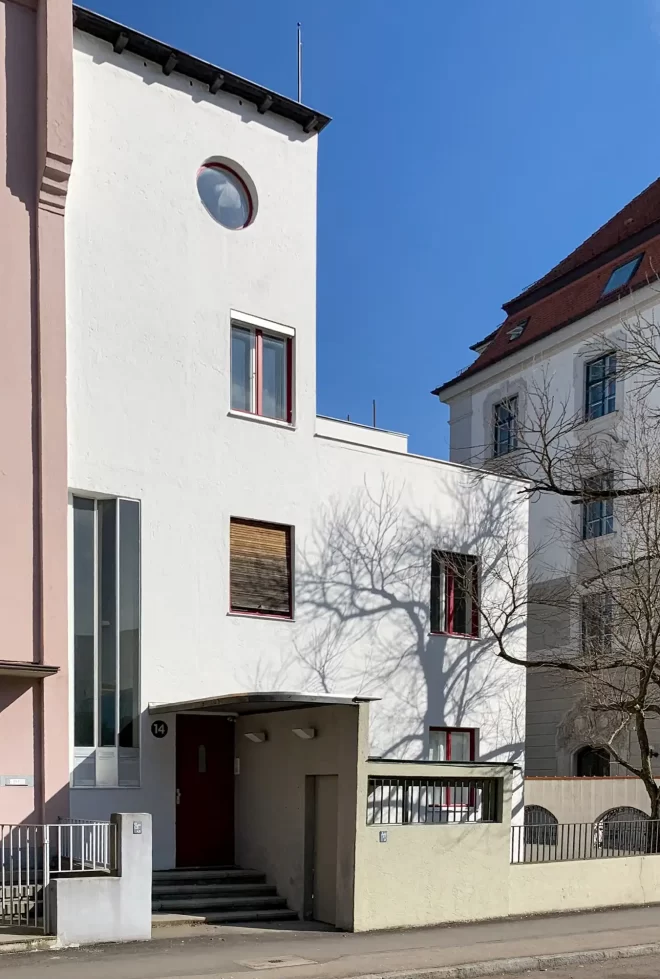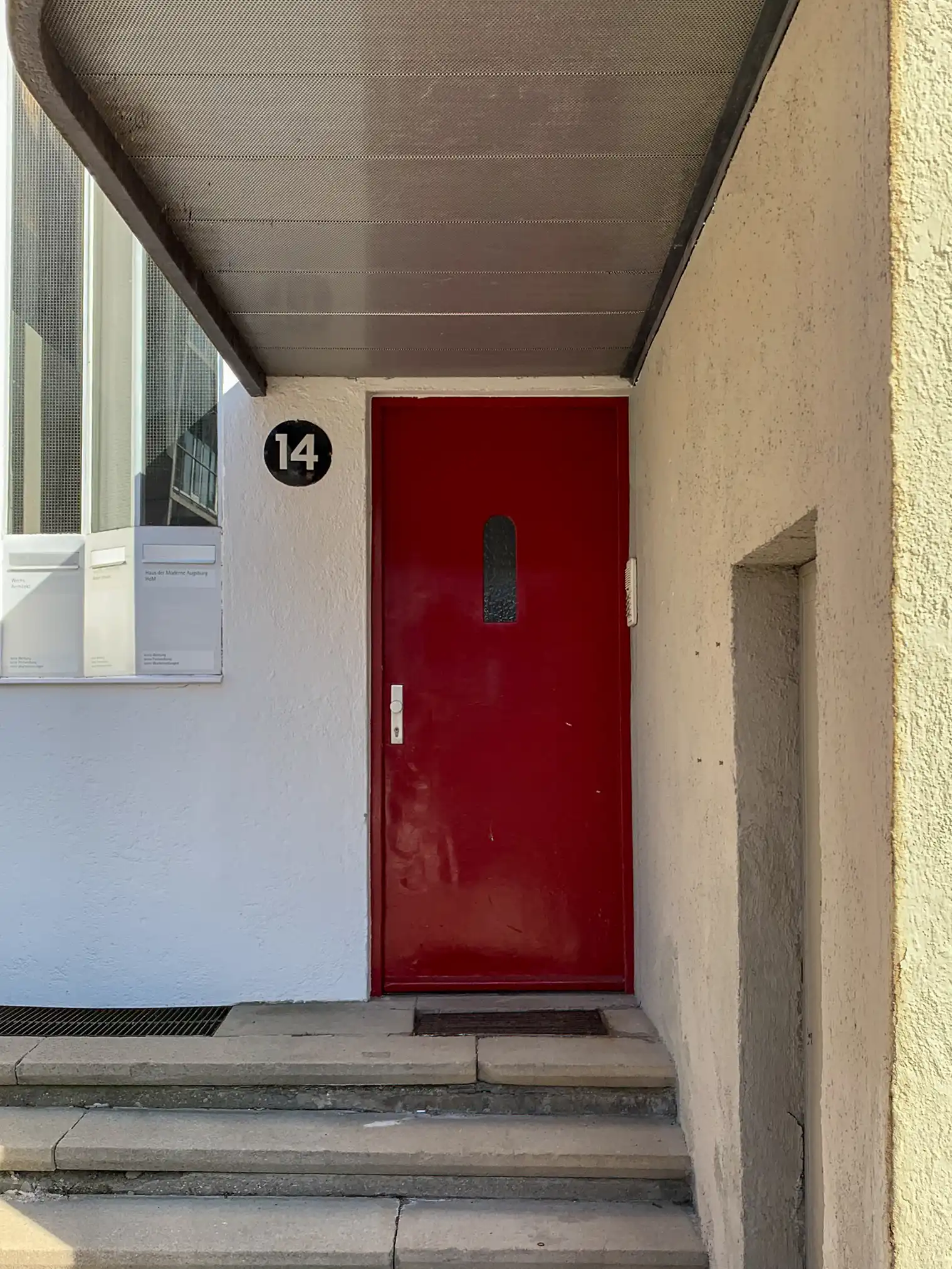
Wechs House, 1929-1931. Architect: Thomas Wechs. Photo: Daniela Christmann
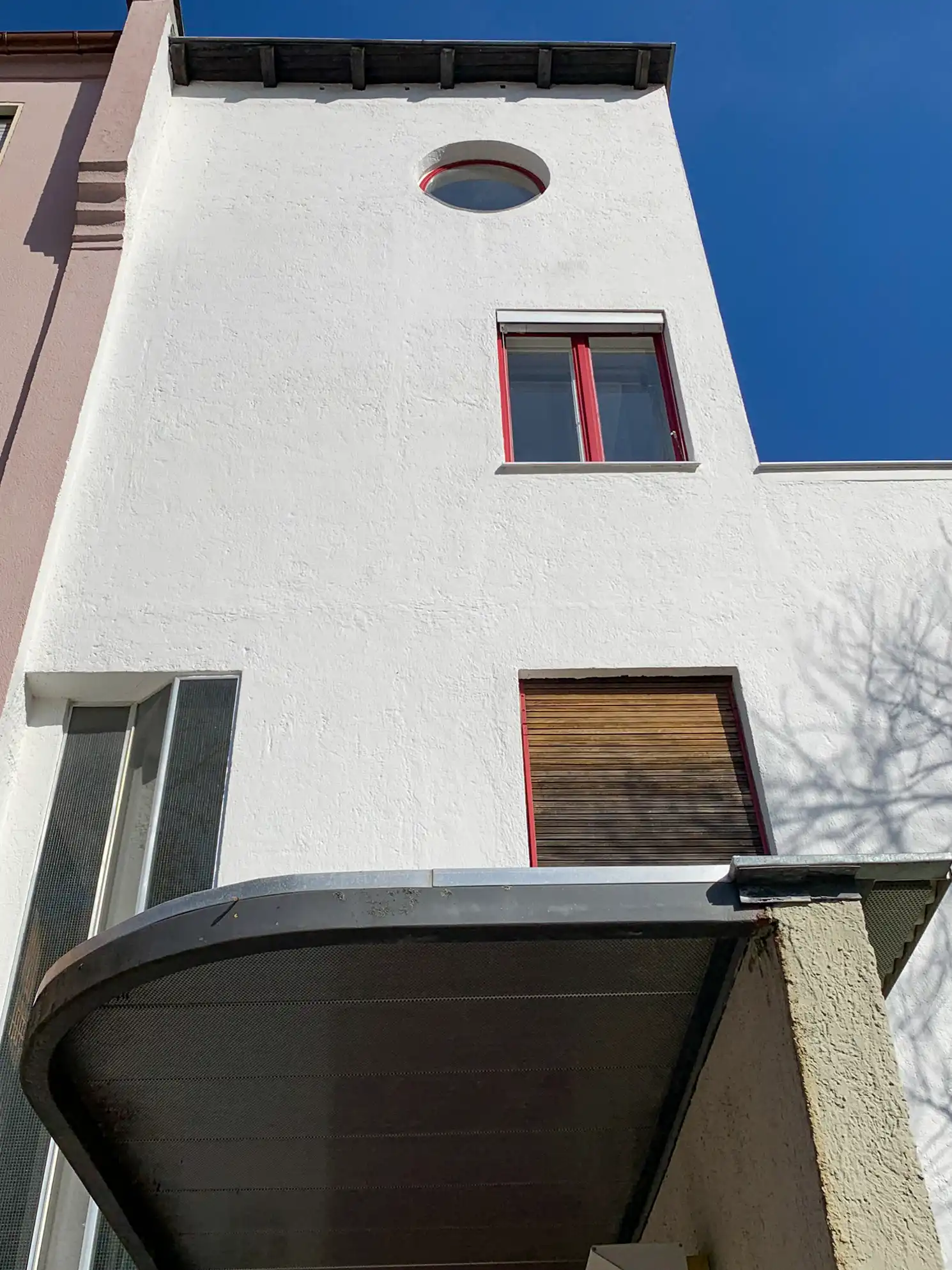
Wechs House, 1929-1931. Architect: Thomas Wechs. Photo: Daniela Christmann
1929 – 1931
Architect: Thomas Wechs
Burgkmaierstraße 14, Augsburg
The two- respectively three-story cubic building with flat roof in modern-objective forms was built from 1929 to 1931 according to plans by Thomas Wechs as his own office and residential building in Burgkmairstraße.
Thomas Wechs
Thomas Wechs completed a carpentry apprenticeship with his father and then attended the building school in Augsburg until 1913.
Together with Georg Werner and Robert Vorhoelzer, he studied architecture at the Technical University of Munich from 1913 to 1914 and from 1918 to 1921 under Theodor Fischer and Friedrich von Thiersch.
Bayerische Postbauschule
After graduating, he worked at the Augsburg Oberpostdirektion, where he contributed to numerous buildings of the Bayerische Postbauschule.
In 1922 he settled in Augsburg as a freelance architect.
Schuberthof and Lessinghof
From 1928 to 1931, he built the Schuberthof and Lessinghof housing complexes on Rosenaustraße in Augsburg, the first modern apartment blocks in Bavaria.
Haus Wechs
In the spring of 1929, Wechs acquired the building plot for his own office and residential building in Burgkmairstraße and completed the new building planning in the fall of 1929.
The architect’s house was the program for his architectural style, which had internalized the principles of Neues Bauen as ideal, contemporary urban architecture.
With its cubic structure and simple façade divided by windows, it fits almost seamlessly as a modern solitaire into the streetscape dominated by buildings from the turn of the century.
A roof terrace and a roundel leading to the garden are located on the southeast-facing rear façade of the building.
The spatial arrangement consisted of a total of eight living and office rooms.
In addition, there was an extra apartment with two rooms and a kitchenette.
The former office and residential building is a listed building.
Planned Use
In 2020, an exhibition space for art, architecture and design is to be set up in the building now called Haus der Moderne.
After renovation, the remaining space is to be rented out again as studios and offices.
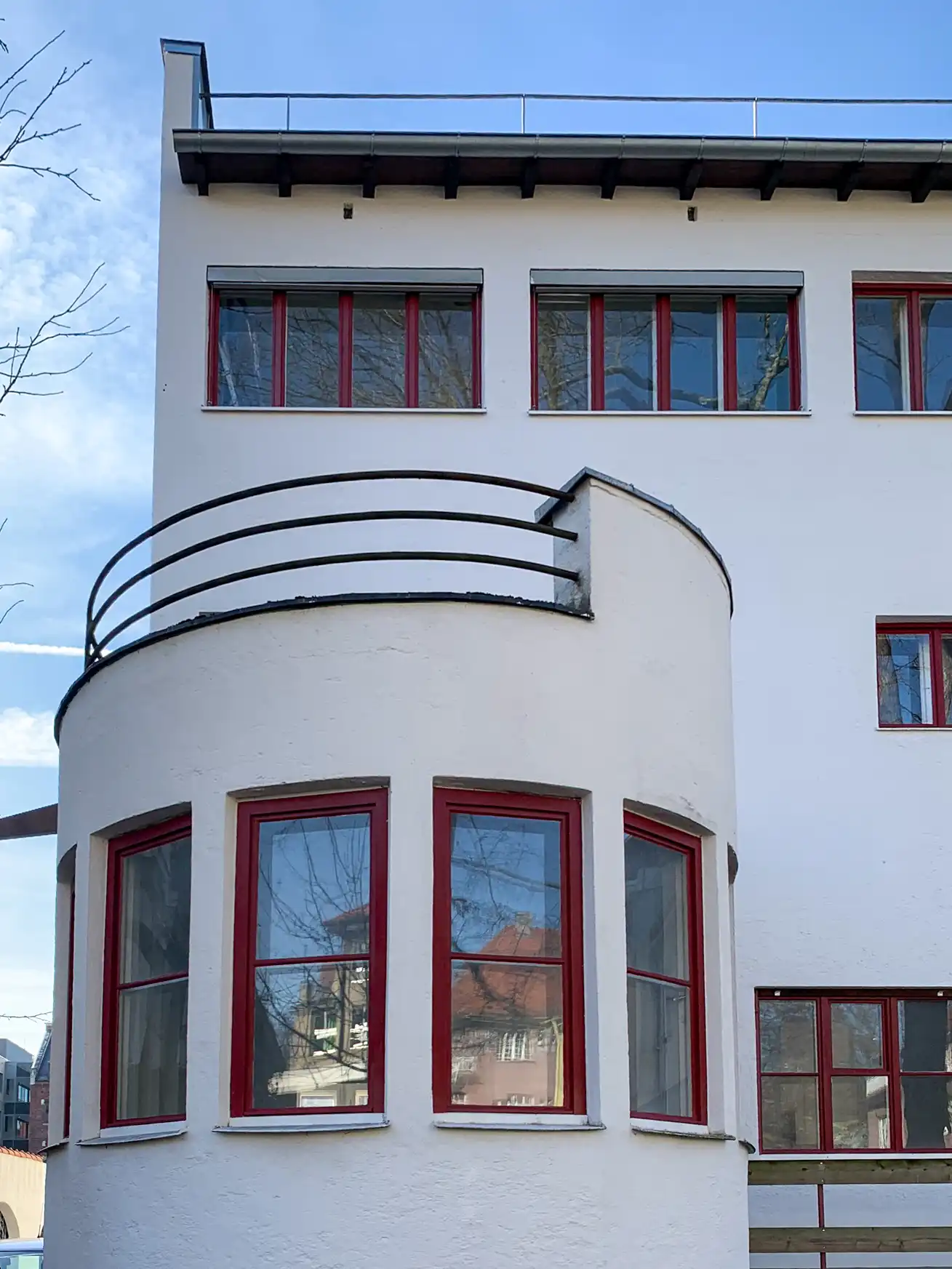
Wechs House, 1929-1931. Architect: Thomas Wechs. Photo: Daniela Christmann
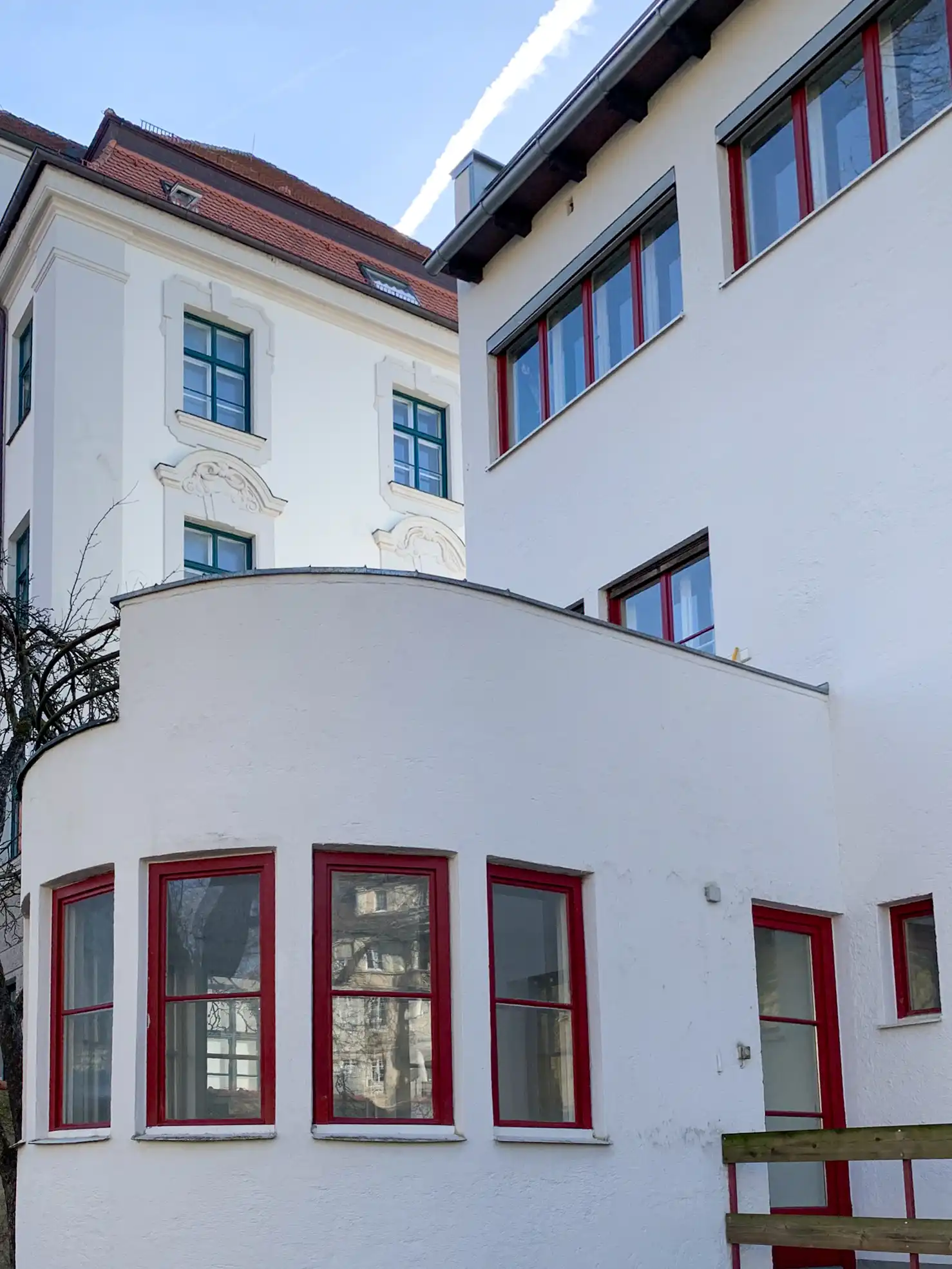
Wechs House, 1929-1931. Architect: Thomas Wechs. Photo: Daniela Christmann
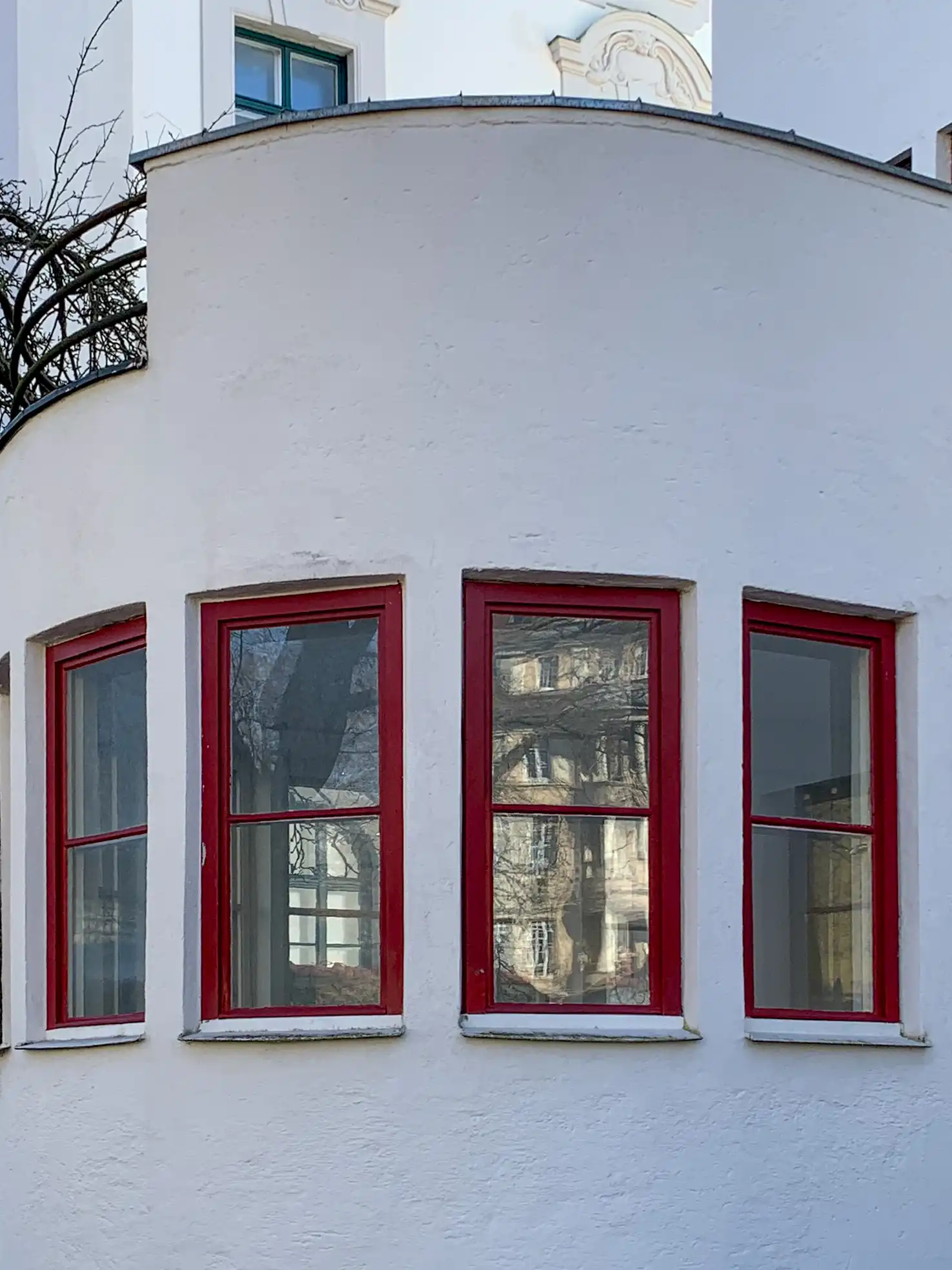
Wechs House, 1929-1931. Architect: Thomas Wechs. Photo: Daniela Christmann

